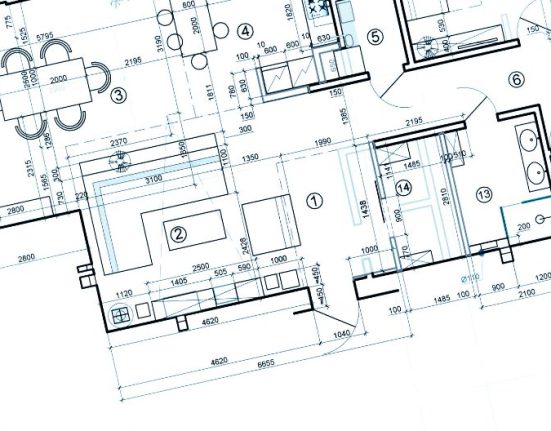This article provides a comprehensive guide to the crucial role of the Technical Design Authority (TDA) within an organization.
It outlines the responsibilities of TDA, its importance in adding value from continuous delivery, and the importance of consistent technologies.
Through real world scenarios technical content companiesThis guide highlights the central role of TDA at the intersection of business and technical domains, highlighting its indispensable contribution to efficient processes and cost reduction.
Key takeaways
- The Technical Design Authority (TDA) is responsible for the architecture of all products within the company and ensures that non-functional issues such as security, privacy and scalability are taken into account.
- TDA facilitates efficient reuse of technologies, services, and patterns across products and translates between business and engineering domains.
- TDA establishes a consistent set of technologies across the business spectrum, ensuring consistent processes and minimizing cost of ownership.
- Continuous delivery adds value by ensuring that designs include all functional and non-functional requirements and validating that releases meet these requirements and follow the predetermined marketing strategy (see definition of marketing strategy here).
Understanding the responsibilities and objectives of a technical design authority
Understanding the responsibilities and objectives of a Technical Design Authority is crucial to ensure effective translation between business and engineering domains, facilitate efficient reuse of technologies, and adhere to non-functional concerns such as security, privacy, and scalability in designs. architectural.
As a technical design authority, one must bridge the gap between these domains, acting as a technical design liaison and arbiter for substantive information and technical changes. The roles and responsibilities of the technical design authority include ensuring consistent processes and minimizing cost of ownership. They also review architectural designs against non-functional requirements and verify that engineering deliverables meet architectural requirements.
Understanding the definition of technical design authority helps appreciate its vital role in the organization's digital environment.
The added value of continuous delivery in technical design
Continuous delivery plays a crucial role in optimizing the technical design process. It provides a framework that enables regular, automated deployments of code changes, thereby facilitating rapid feedback on modifications. This approach not only speeds up the development cycle but also significantly improves the quality of the final product by enabling early detection and rectification of problems.
Additionally, continuous delivery paves the way for a more agile, transparent and collaborative work environment, fostering a culture of shared responsibility. These benefits, in turn, contribute to improving project efficiency, reducing costs and increasing customer satisfaction, thus adding value to the overall technical design.
The importance of consistent technologies in technical design
Without a doubt, consistent technologies play a primary role in technical design. They promote system interoperability, improve process efficiency, and reduce overall cost of ownership. By opting for consistent technologies, organizations can ensure that their architectural designs consider all functional and non-functional requirements.
Furthermore, consistent technologies facilitate efficient reuse of technologies, services, and patterns, thus enabling economies of scale. They also enable easier review and compliance checks of engineering deliverables against architectural requirements.
Additionally, consistent technologies promote a unified approach toward technological advancements. This minimizes the risk of system failures and security breaches. At its core, adopting consistent technologies is a strategic move that not only streamlines operations but also paves the way for future growth and innovation.

Analysis of the role of technical design authority in an organization
In the context of an organization, the Technical Design Authority (TDA) plays a critical role in ensuring that architectural designs meet functional and non-functional requirements, while promoting efficient reuse of technologies across various business units. business. The TDA is present and supervises the first conceptual design example of a product, service, etc.
As a bridge between the business and technical spheres, TDA facilitates communication, ensuring understanding, alignment of objectives and the use of technical design best practices.
TDA verifies compliance of engineering deliverables with architectural requirements, ensuring that non-functional aspects such as security, privacy, and scalability are effectively addressed.
Additionally, TDA drives economies of scale through the strategic reuse of technologies, services, and patterns.
Therefore, in the organizational hierarchy, TDA stands as a vital link that promotes innovation and operational efficiency through a robust, sustainable and compatible technical design.
Case Study: Implementing Technical Design Authority in Real World Scenarios
Examining multiple instances of Technical Design Authority implementation provides valuable insights into the practical challenges and successes encountered in various organizational contexts.
From small startups to large enterprises, the role of the Technical Design Authority is integral in ensuring consistent technology implementation and alignment with business objectives and marketing people.
In particular, the case of a global telecommunications provider illustrates how the Technical Design Authority facilitated a major digital transformation, ensuring architectural integrity while enabling efficient reuse of technologies.
In contrast, in a public sector organisation, the Technical Design Authority faced challenges in balancing compliance with innovation due to strict regulatory constraints.
These examples highlight the versatility of the Technical Design Authority role and underline its importance in different organizational settings.
Subscribe to our editorial newsletter and start delivering concise and creative content
Frequent questions
What qualifications or experience does someone typically need to become a technical design authority?
A Technical Design Authority typically requires a degree in Computer Science or a related field, significant experience in IT architecture, proficiency in multiple programming languages, and strong leadership and decision-making skills.
What typical challenges might a technical design authority face in their role and how can they be overcome?
A Technical Design Authority can address challenges such as aligning business and technical needs, facilitating technology reuse, and ensuring compliance with architectural requirements. These can be overcome through clear communication, effective governance and continuous learning.
Can you provide examples of specific tools or software that a technical design authority might use in their work?
A Technical Design Authority can use tools such as UML for modeling systems, JIRA for issue tracking, Confluence for technical design document componentsand Jenkins for continuous integration to ensure efficient and consistent design across an organization's entire technology landscape.
How does the technical design authority collaborate with other teams or departments within the organization?
The Technical Design Authority collaborates with other teams by translating between business and engineering domains, collaborating with business and product governance teams, and ensuring that non-functional concerns are addressed in engineering deliverables.
What measures or metrics can be used to evaluate the success of a technical design authority's work?
The success of a Technical Design Authority can be evaluated through measures such as compliance with architectural requirements, effective translation between business and engineering domains, and efficient reuse of technologies across the enterprise.
Conclusion
This guide clarifies the critical role of the Technical Design Authority (TDA) within an organization.
TDA's responsibilities encompass implementing consistent technologies, arbitrating design changes, and facilitating added value from continuous delivery.
The importance of this feature is further underlined by its impact on reducing ownership costs and enabling effective processes.
Therefore, TDA serves as a critical link between business and technical domains, shaping the organization's technological landscape.









Leave feedback about this